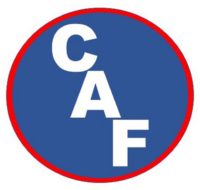Contemplating the move from plain water firefighting to CAF (Compressed Air Foam) firefighting is a daunting challenge.
Switching to CAF takes a double buy in. 1st – there is the financial commitment in equipment (but then again our primary goal is in firefighter safety). The 2nd, is the personnel buy in and committment to using the life saving tool.
While the CompressedAirFoam.com site keeps saying that using BUBBLES is not rocket science, to fully understand what is happening, how it happens and how to quickly overcome any equipment issues while still producing bubbles does have a learning curve.
What follows below is an idea that touches on both the financial and learning curves – $tart $mall!!!
<$500
For under $500, the department can purchase a bucket or 2 of Class A Foam concentrate and either buy or build one or more aspirating nozzle(s). If it is strickly for training purposes, purchase a lower cost detergent like car wash detergent. Plan a training day, with or without live fire. Do the math (For NAF – .5% sol = 1/2 gal of concentrate per 100 gal in the water tank) Batch mix the concentrate in the apparatus water tank. How many tanks of water can you flow with 1 or 2 buckets of foam? Attach the aspirating nozzle and begin to Play With It & See!! Are you making foam (W + Conc + A + A)? Can you change from wet to a more fluid foam? Watch the foam on combustible products. Observe the fuel moisture absorption. If using props and/or live fire as suggested in the Performance Evaluation – DIY page, apply foam to wood. If using fire, how does the foam affect the fire spread? If a wrecked car is available where you train, flow foam into the car. How much water did it actually take. How many evolutions can you run with 1 or 2 buckets of concentrate? With more than one nozzle or an adjustible nozzle, practice making low, medium and high expansion foam. Practice how to apply small amounts of the foam for mop up. What about wildland fuels, trash? Make sure to flush the tank and pump with clean water when finished.
NOTE – It is possible to learn the majority of the principles of making and using CLASS A FOAM for under $500.
<$2000
There are a couple of options here:
Purchase a backpack type foam system. This is simple to set up – connect a water only hose from the engine to the pack. This step can provide a somewhat automatic proportioning function as well as a small concentrate tank.
Another choice is an around the pump proportioner. This requires a little plumbing. The system uses the suction side of the pump to pull concentrate into the pump. Foam concentrate will flow from any discharge.
Another option is an in-line proportioner placed after the pump and inline with the discharges or inserted in a hose lay at any location.


No matter the choice, the application principals of CLASS A FOAM are the same. Good for practice on small fires, mop up/overhaul, grass/wildland fires, and trash fires. And again, PLAY WIth IT & SEE!!!!
<$5000
This is a wide range, but this step-up would include the purchase and installation of an automatic foam concentrate proportioning system, foam manifold and a foam concentrate tank. This purchase would eliminate the need to do the math associated with batch mixing and provide an automatic constant appropriate % solution. The focus in training for this step would be on the operations and maintenance of the system. The actual application of the NAF would be identical to the <$500 step. Firefighters should focus on how the system works (PUSH THE RED BUTTON), how to run a bypass, how to run simulated mode, and how to immediately recognize issues (the most common being forgetting to PUSH THE RED BUTTON!!) Once you understand the system – PLAY WITH IT & SEE!!!
$60,000
This is a big step up, but this is the ultimate in fast and safe firefighting. A full blown (pun intended) CAF System . To understand how a CAF system can pay for itself, read “CAF Costs (The Dollars $$$$)”.
While the principals of CLASS A FOAM are the same in CAF, the applications and understanding the system require a big jump in learning. The CAF section of this web site addresses the necessary knowledge for basic CAF applications, and system operations.
Department instruction by certified professional Foam & CAF instructors is available and highly recommended. Starting off on the right foot with the right instruction is invaluable to the success of your Class A Foam & CAF program.
NOTE – Photos displayed are for informational purposes only and do not constitute an endorsement of the product.





































